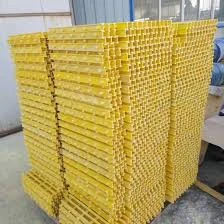
-
 Afrikaans
Afrikaans -
 Albanian
Albanian -
 Amharic
Amharic -
 Arabic
Arabic -
 Armenian
Armenian -
 Azerbaijani
Azerbaijani -
 Basque
Basque -
 Belarusian
Belarusian -
 Bengali
Bengali -
 Bosnian
Bosnian -
 Bulgarian
Bulgarian -
 Catalan
Catalan -
 Cebuano
Cebuano -
 China
China -
 China (Taiwan)
China (Taiwan) -
 Corsican
Corsican -
 Croatian
Croatian -
 Czech
Czech -
 Danish
Danish -
 Dutch
Dutch -
 English
English -
 Esperanto
Esperanto -
 Estonian
Estonian -
 Finnish
Finnish -
 French
French -
 Frisian
Frisian -
 Galician
Galician -
 Georgian
Georgian -
 German
German -
 Greek
Greek -
 Gujarati
Gujarati -
 Haitian Creole
Haitian Creole -
 hausa
hausa -
 hawaiian
hawaiian -
 Hebrew
Hebrew -
 Hindi
Hindi -
 Miao
Miao -
 Hungarian
Hungarian -
 Icelandic
Icelandic -
 igbo
igbo -
 Indonesian
Indonesian -
 irish
irish -
 Italian
Italian -
 Japanese
Japanese -
 Javanese
Javanese -
 Kannada
Kannada -
 kazakh
kazakh -
 Khmer
Khmer -
 Rwandese
Rwandese -
 Korean
Korean -
 Kurdish
Kurdish -
 Kyrgyz
Kyrgyz -
 Lao
Lao -
 Latin
Latin -
 Latvian
Latvian -
 Lithuanian
Lithuanian -
 Luxembourgish
Luxembourgish -
 Macedonian
Macedonian -
 Malgashi
Malgashi -
 Malay
Malay -
 Malayalam
Malayalam -
 Maltese
Maltese -
 Maori
Maori -
 Marathi
Marathi -
 Mongolian
Mongolian -
 Myanmar
Myanmar -
 Nepali
Nepali -
 Norwegian
Norwegian -
 Norwegian
Norwegian -
 Occitan
Occitan -
 Pashto
Pashto -
 Persian
Persian -
 Polish
Polish -
 Portuguese
Portuguese -
 Punjabi
Punjabi -
 Romanian
Romanian -
 Russian
Russian -
 Samoan
Samoan -
 Scottish Gaelic
Scottish Gaelic -
 Serbian
Serbian -
 Sesotho
Sesotho -
 Shona
Shona -
 Sindhi
Sindhi -
 Sinhala
Sinhala -
 Slovak
Slovak -
 Slovenian
Slovenian -
 Somali
Somali -
 Spanish
Spanish -
 Sundanese
Sundanese -
 Swahili
Swahili -
 Swedish
Swedish -
 Tagalog
Tagalog -
 Tajik
Tajik -
 Tamil
Tamil -
 Tatar
Tatar -
 Telugu
Telugu -
 Thai
Thai -
 Turkish
Turkish -
 Turkmen
Turkmen -
 Ukrainian
Ukrainian -
 Urdu
Urdu -
 Uighur
Uighur -
 Uzbek
Uzbek -
 Vietnamese
Vietnamese -
 Welsh
Welsh -
 Bantu
Bantu -
 Yiddish
Yiddish -
 Yoruba
Yoruba -
 Zulu
Zulu
fiberglass 90 degree elbow
Understanding the Importance of Fiberglass 90 Degree Elbows in Industrial Applications
In the realm of industrial piping systems, the choice of materials and fittings plays a crucial role in ensuring the efficiency and durability of the overall system. One component that frequently stands out in this context is the fiberglass 90 degree elbow. This seemingly simple fitting has significant implications for the performance of piping systems, especially in applications involving corrosive substances, temperature extremes, and complex fluid dynamics.
Fiberglass, as a material, has garnered attention in various industries due to its lightweight, high strength-to-weight ratio, and excellent resistance to corrosion. These attributes make fiberglass an ideal choice for piping systems that transport aggressive chemicals or operate in challenging environments. When we talk about fiberglass 90 degree elbows, we are referring to fittings that change the direction of piping systems at a precise angle of 90 degrees, essential for navigating around obstacles or re-routing flow paths.
One of the primary advantages of using fiberglass 90 degree elbows is their resistance to chemical corrosion. Unlike metal fittings, which can succumb to rust or degradation when exposed to harsh chemicals, fiberglass maintains its integrity, contributing to a longer lifespan for the entire piping system. This is especially critical in industries such as chemical processing, wastewater management, and food production, where the transportation of corrosive or reactive substances is common.
Additionally, fiberglass elbows are known for their smooth internal surfaces, which minimize friction loss within the system. This characteristic not only improves flow efficiency but also reduces energy consumption, as pumps do not have to work as hard to move fluids through the system. This feature is particularly beneficial in large-scale industrial applications where energy costs can significantly impact operational expenses.
fiberglass 90 degree elbow

Another point of consideration is the ease of installation associated with fiberglass fittings. Their lightweight nature allows for more straightforward handling and quicker assembly, reducing labor costs and minimizing downtime during installation or maintenance. This efficiency is particularly advantageous in projects with tight timelines or limited budgets.
Moreover, fiberglass 90 degree elbows are available in various sizes and specifications to meet the diverse needs of different applications. Whether for small-scale residential projects or large industrial installations, these fittings can be tailored to fit specific requirements, ensuring compatibility with existing piping systems.
The thermal resistance of fiberglass is another notable benefit. These elbows can withstand extreme temperatures without losing structural integrity, making them suitable for applications involving both high and low-temperature fluids. This property further expands their usability across different industries, including HVAC systems, chemical storage, and even marine applications.
In conclusion, fiberglass 90 degree elbows offer a compelling combination of durability, efficiency, and ease of use, making them indispensable in modern industrial piping systems. As industries continue to seek materials and components that enhance operational performance while minimizing costs, fiberglass fittings stand as a robust solution. Investing in quality fiberglass elbows is a smart choice for any organization aiming to improve the reliability and longevity of their piping infrastructure.
Latest news
-
Exploring the Benefits of Top Hammer Drifter Rods for Enhanced Drilling PerformanceNewsJun.10,2025
-
High-Precision Fiberglass Winding Machine for GRP/FRP Pipe Production – Reliable & Efficient SolutionsNewsJun.10,2025
-
FRP Pipes & Fittings for Shipbuilding - Corrosion-Resistant & LightweightNewsJun.09,2025
-
Premium FRP Flooring Solutions Durable & Slip-ResistantNewsJun.09,2025
-
Premium Fiberglass Rectangular Tanks Durable & Lightweight SolutionNewsJun.09,2025
-
Tapered Drill String Design Guide Durable Performance & UsesNewsJun.09,2025









